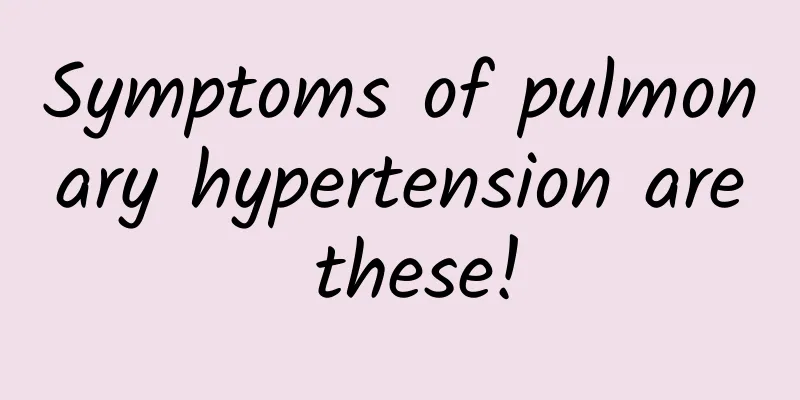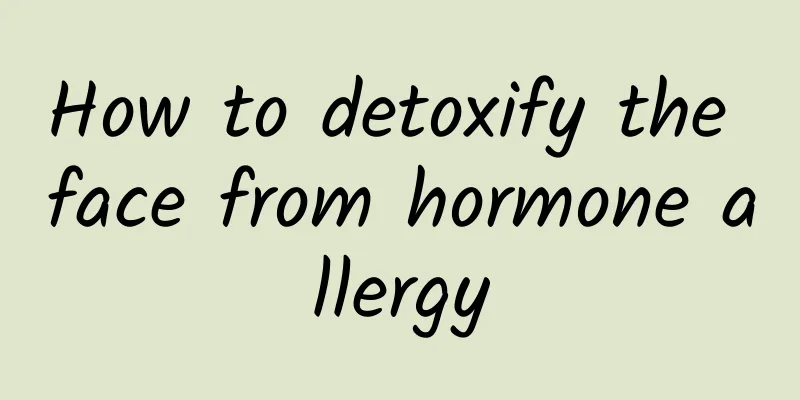Symptoms of pulmonary hypertension are these!

|
From a clinical perspective, pulmonary arterial hypertension lacks specific symptoms, especially in the early stages, when there may be no subjective symptoms. As the disease worsens, adverse reactions such as exertional dyspnea, fatigue, dizziness, chest pain, abdominal distension, syncope, hepatomegaly, and lower limb edema will appear. 1. Clinical symptoms Pulmonary arterial hypertension lacks specific clinical symptoms. Patients may have no symptoms in the early stages or only show clinical manifestations of the primary disease. As pulmonary artery pressure increases, some nonspecific symptoms appear, such as exertional dyspnea, fatigue, dizziness, chest pain, abdominal distension, and syncope. Due to the increase in pulmonary artery pressure, signs of right atrial and right ventricular hypertrophy may appear, such as hypertrophy of P2, holosystolic murmur caused by tricuspid regurgitation, diastolic murmur caused by pulmonary valve insufficiency, and right ventricular third heart sound. In right heart failure, distended jugular veins, hepatomegaly, and lower limb edema may be seen. Signs related to the cause of pulmonary hypertension may also be found, such as telangiectasia, digital ulcers, and sclerosis of the fingertips, which are common in patients with scleroderma; moist rales during the inspiratory phase indicate interstitial lung disease; and spider angiomas, palmar erythema, and testicular atrophy indicate liver disease. Finger clubbing, if detected in patients with idiopathic pulmonary hypertension, suggests congenital heart disease or peripheral vascular occlusive disease. The World Health Organization (WHO) divides pulmonary arterial hypertension into four levels according to the severity of its clinical manifestations. 2. Disease Treatment The purpose of treatment is mainly to relieve the patient's clinical symptoms, increase activity tolerance, prevent disease progression, and prolong the patient's survival. The treatment of PAH patients cannot be limited to simple drug therapy, but should be a complete treatment strategy, including evaluation of the severity of the patient's condition, supportive treatment, evaluation of vascular reactivity, evaluation of drug effectiveness and evaluation of combination therapy of different drugs. Develop individualized treatment plans based on different clinical types of PAH; select PAH-lowering drugs based on the functional classification of PAH. The treatment principles for different types of PAH are not the same. Correctly understanding the related diseases that cause PAH and actively treating the related diseases are the primary measures for treating disease-related PAH. For example, PAH associated with connective tissue disease should first be treated with hormones and immunosuppressants; PAH caused by drugs or toxins should first be treated with cessation of drug use or exposure to toxins. For PAH that directly affects pulmonary vascular function or structure, treatment is mainly focused on correcting or reversing pulmonary vascular changes. Currently, traditional treatments for pulmonary hypertension mainly include oxygen inhalation, diuretics, digoxin and warfarin anticoagulation. It is mainly used to treat right heart failure and in situ pulmonary artery thrombosis. Other pulmonary vasodilators available for treatment include: calcium channel blockers; prostacyclin drugs: such as vantavirin; endothelin-1 receptor antagonists: bosentan, ambrisentan, etc.; phosphodiesterase-5 inhibitors: such as sildenafil, tadalafil, etc. For severe PAH, atrial septostomy, lung transplantation, and even gene therapy may be considered. |
<<: What to do if you have chest tightness due to bronchitis? Treat bronchitis promptly
>>: What to do if your artery ruptures? Four ways to help you stay healthy
Recommend
Why do you lose your hair in autumn? What are the reasons?
In autumn, some friends will find that their hair...
Causes of mild nausea but no vomiting
Nausea is a common symptom, and there are many re...
How long does it take for the effect of Chinese medicine to disappear after stopping taking it?
Being sick can cause great damage to people's...
Multiple calcifications in the liver
Organ calcification is an important problem and t...
What vegetables to eat for oral ulcers
Oral ulcer is a common disease. Although oral ulc...
What are the benefits of walnut wood?
Everyone knows that eating walnuts has many benef...
Men, do you understand scrotal moisture? The harm should not be underestimated
There is no change on the surface of the scrotal ...
How do women know what their body type is?
According to traditional Chinese medicine, a pers...
What are the side effects of glucosamine hydrochloride?
Glucosamine hydrochloride is a relatively common ...
Anal pseudocondyloma
Genital warts are a disease that easily occurs in...
What to do if a two-year-old child is anemic
For a two-year-old child, if anemia occurs, it wi...
Symptoms of cervical nerve compression
When we face the cervical vertebra compressing th...
Effects of Hedyotis diffusa
Houttuynia cordata is a Chinese herbal medicine. ...
What is the best medicine for getting angry?
Getting angry is quite common in life. For exampl...
What to do if you have frequent urination, urgency, or incontinence? Pay attention to your daily life
In daily life, many people suffer from urinary tr...









